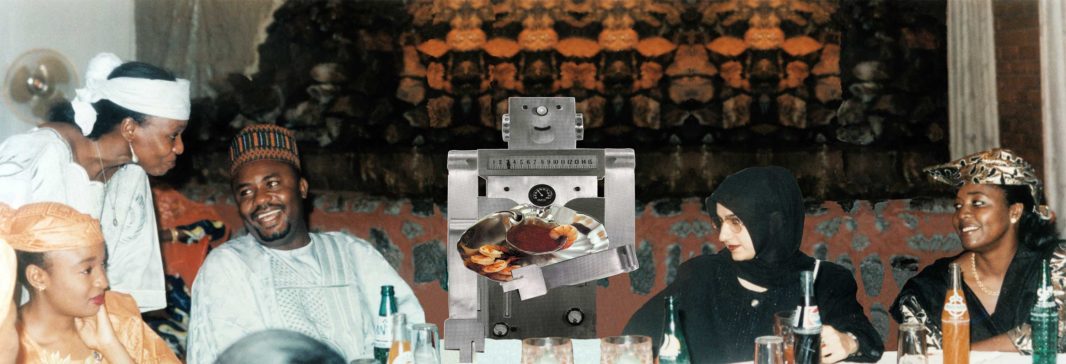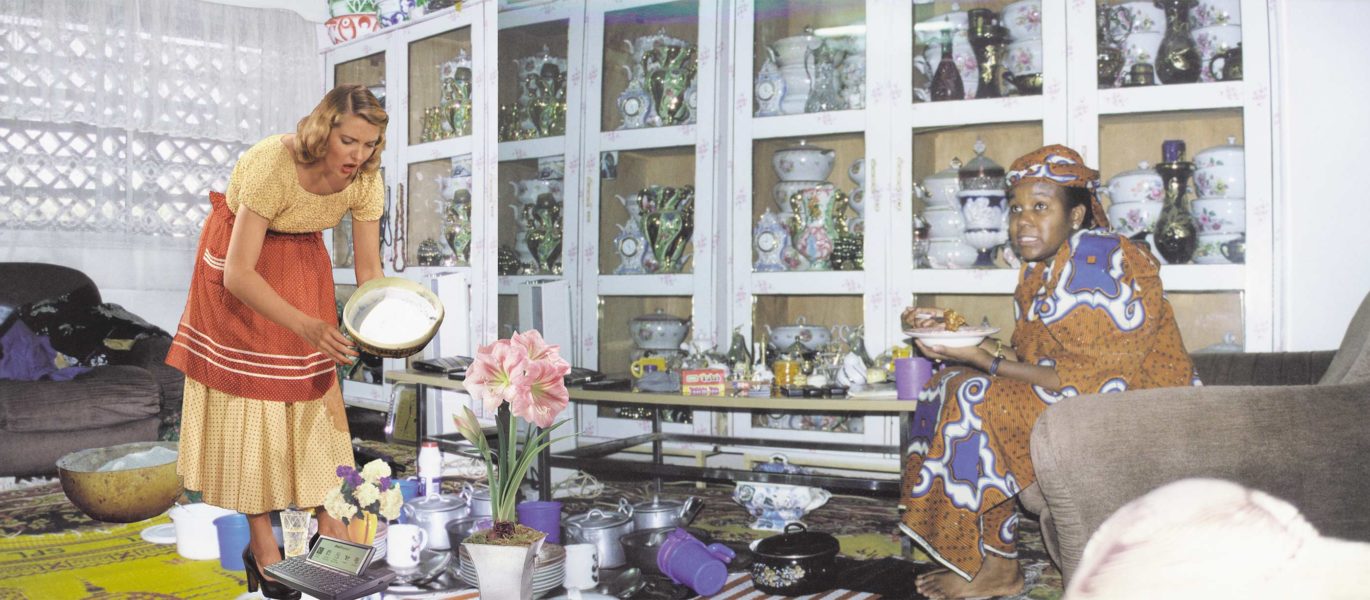It’s almost 2020, and we’re so accustomed to technology that we barely even notice the impact it has on our lives anymore. We consult recipes on our tablets, watch TV on our computers, you may even be reading this article on your phone. Nigerian artist Fatimah Tuggar wants you to put the screen down and consider how we define technology and innovation, what intrinsic value it has and how it impacts societal power structures.
It’s these questions and more that she explores in “Fatimah Tuggar: Home’s Horizons,” showing at the Davis Museum at Wellesley College through December 15. The exhibition — which features 26 large-scale pieces of multimedia art, as well as a new piece commissioned by the Davis — explores how technology and innovation have shaped domestic spaces in the past two centuries.
Tuggar doesn’t define technology merely as the gadgets we check our e-mail on. She says, “I am focused on technology as a catalyst for the human condition. My position is that all rational making and knowledge is technological and collaborative across cultures and histories; we are all building on prior experience.”
For example, early man creating spears and other hunting tools were developing technology, knitters pioneering new stitching techniques are developing technology, and so on.
Similarly, technology doesn’t have the same meaning in different cultures and time periods. In her interior collages, Tuggar juxtaposes American and West African spaces, traditions and uses of technology. In “Working Woman” we easily identify the computer, telephone and power strip as instruments of work. But the handmade screen in the interior space and the colorfully dyed garments of the central figure are also representative of innovation and labor.

Courtesy of Fatimah Tuggar and BintaZarah Studios
“Robo Entertains” a 2001 computer montage by Nigerian artist Fatimah Tuggar
Tuggar uses these interiors as a familiar reference point for these discussions of technology. “I see the domestic as a microcosm of society,” she says. “I find exploring home to be an excellent lens for taking the pulse of what is going on at multiple levels, from the micro to macro and from one location to another across class and race structures.”
But the use of these interior spaces also showcases how work that has traditionally been done by women is not only serious labor, but technologically innovative as well. If the figure in “Working Woman” did not have all those trappings of contemporary, white-collar work, would she still be seen as an innovator? Would her work be considered as meaningful as someone else’s?
It’s not only in domestic spaces that Tuggar wants to promote women. “The participation of women in the creation of Western computing systems is rarely acknowledged,” she says. “People do not talk about women like Melba Roy Mouton, Dorothy Johnson Vaughan…Maria Mitchell, to name a few examples. But we all know about Charles Babbage, Tim Berners-Lee and Bill Gates.” Similarly, she points out, non-Western contributions are also disregarded.
This leads to a larger conversation about power and access and how technology is utilized to further those unequal dynamics. Tuggar explores this in “Deep Blue Wells,” a multimedia, interactive work with textiles, sculptures, video and AR that was commissioned by the Davis Museum. While exploring traditional West African indigo dyeing and the crafts made with the dyed materials, Tuggar examines how our societal frameworks categorize things as valuable, important or inventive, the power held by those who make the categories and how they vary in place, culture and time.
There are a many elements at play in “Fatimah Tuggar: Home’s Horizons.” But Tuggar’s objective isn’t to have viewers walk away with all the answers; it’s to get the conversation going. She says, “I hope this becomes an experience of understanding that there are multiple kinds of approaches to knowing and intelligence … and being curious and questioning everything is necessary.”
The show requires a special ticket, $12 for general admission and $6 for Wellesley College alumnae.



 3 min read
3 min read

